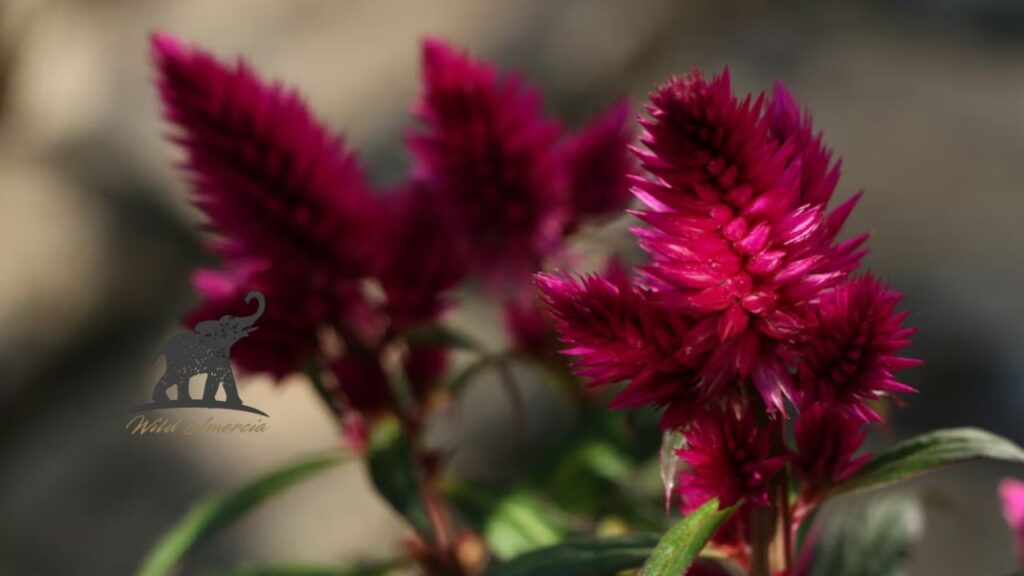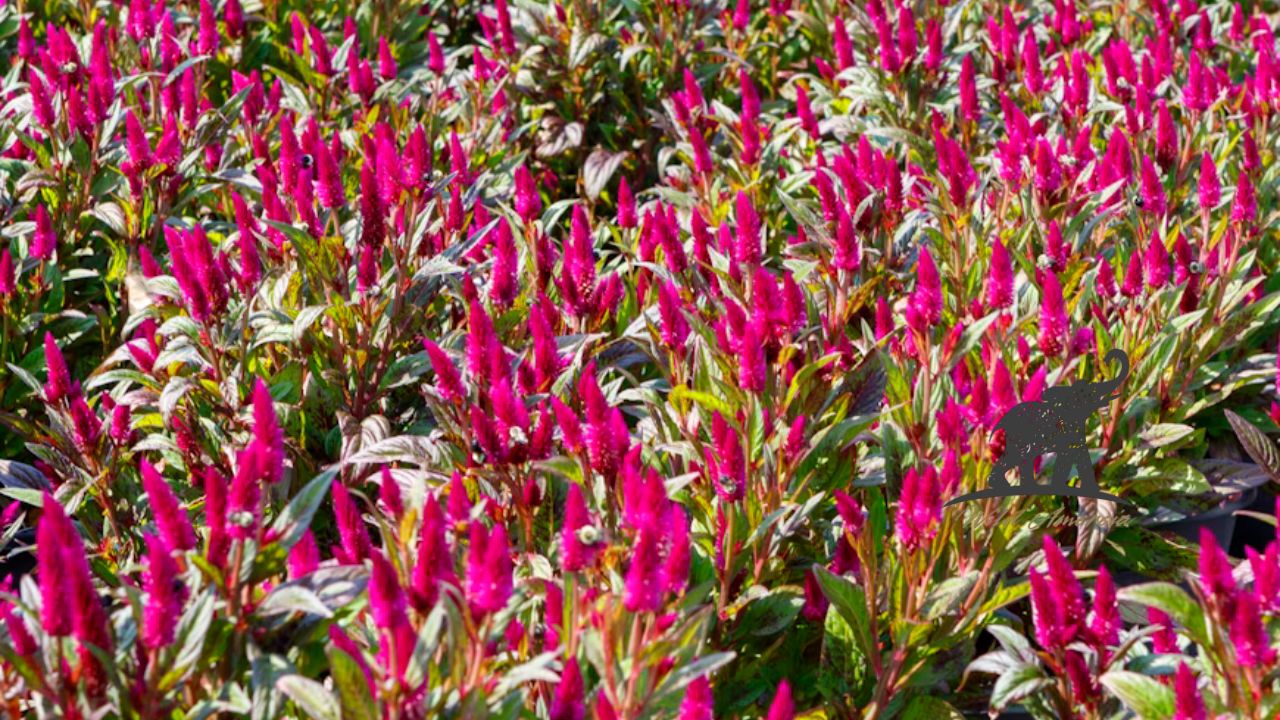If you’re looking to add a spectacular burst of color and unique texture to your garden, the celosia flower is an absolutely brilliant choice. These stunning blooms, often called cockscomb, are famous for their unusual shapes and intensely vibrant hues that feel almost electric. They are a true showstopper.
The celosia plant is remarkably easy to grow, making it a favorite for both new gardeners and seasoned experts. Whether you’re planting in beds, borders, or containers, these flowers bring an incredible energy that few other plants can match. Their flame-like plumes and brain-like crests are unforgettable.
Celosia at a Glance
To get you started, here is a quick overview of what makes the celosia so special.
| Feature | Description |
| Common Names | Cockscomb, Woolflower, Prince’s Feather |
| Scientific Name | Celosia argentea |
| Plant Type | Herbaceous annual (though some are tender perennials) |
| Mature Size | 6 inches to 3 feet tall, 6–18 inches wide |
| Sun Exposure | Full sun (at least 6-8 hours daily) |
| Soil Type | Well-drained, rich in organic matter |
| Bloom Time | Summer through fall |
| Flower Colors | Red, orange, yellow, pink, purple, white, magenta |
| Hardiness Zones | 10–12 (grown as an annual in most other zones) |
The Fascinating World of Celosia
The name celosia comes from the Greek word “kḗleos,” meaning “burning,” which perfectly describes the flower’s fiery colors and flame-like shapes. These plants are native to the mountainous regions of Africa and Asia, where they thrive in sunny, warm climates. Their unique appearance has made them a symbol of boldness and affection.

One of the most captivating things about celosia is its incredible diversity. The plant is a member of the amaranth family, which explains its resilience and striking appearance. This diversity is grouped into three main types, each with its own distinct personality.
Meet the Three Main Types of Celosia
Understanding the different groups of celosia will help you choose the perfect one for your garden’s aesthetic. Each variety offers a completely different visual experience.
Celosia cristata (Cockscomb)
This is perhaps the most famous type, often called cockscomb celosia. Its flower head is a tightly packed, wavy crest that strikingly resembles a rooster’s comb or even a brain. The velvety texture and intricate folds of celosia cristata make it a truly fascinating flower to observe up close.
Gardeners love the celosia cockscomb for its architectural structure. It adds a touch of the extraordinary to any flower bed. Popular varieties include the ‘Dracula’ celosia, which has deep, blood-red crests, and the ‘King Coral’, known for its large, impressive blooms.
Celosia plumosa (Plume Celosia)
The celosia plumosa group features soft, feathery plumes that stand upright like colorful torches. These varieties, also known as plumed celosia or Prince’s Feather, bring a wonderful sense of movement and softness to the garden. They sway gently in the breeze, creating a dynamic and lively display.
The ‘Pampas Plume’ celosia is a classic choice, offering a mix of vibrant colors on tall, elegant stems. Another favorite is ‘Dragon’s Breath’, which is renowned for its fiery red-green foliage and dramatic, deep-red plumes. This particular celosia is a real head-turner.
Celosia spicata (Spiked Celosia)
Also known as wheat celosia, this group produces slender, cylindrical flower spikes that resemble heads of wheat or bottlebrushes. Celosia spicata has a more delicate, wildflower-like appearance compared to its bolder cousins.
These flowers are perfect for adding vertical interest and a touch of whimsy to garden arrangements. ‘Flamingo Feather’ is a beloved variety with beautiful pink spikes that fade to a soft white at the base, creating a lovely two-toned effect.
How to Grow Stunning Celosia Flowers
One of the greatest joys of growing celosia is how wonderfully straightforward it is. With a bit of sun and the right conditions, you can enjoy these magnificent blooms all season long.

Planting Celosia Seeds and Seedlings
You can start your celosia journey from seeds or by purchasing seedlings. Growing celosia from seed is a rewarding process. Start the seeds indoors about 6 to 8 weeks before your last expected frost date.
- Press the tiny celosia seeds gently into the soil surface, as they need light to germinate.
- Keep the soil moist and warm (around 70-80°F).
- You should see sprouts in about 10-15 days.
Once the danger of frost has passed, you can transplant your celosia seedlings outdoors. Choose a location that receives full, direct sunlight for most of the day.
Light and Soil Requirements
The light requirements for celosia are simple: they crave sun. The more sun they get, the more vibrant and plentiful their blooms will be. A spot with at least 6-8 hours of direct sunlight is ideal.
For soil, celosia plants prefer well-drained, fertile ground. They are susceptible to root rot, so avoid heavy clay soils that retain too much water. Amending your garden bed with compost or other organic matter will provide the nutrients your celosia needs to thrive.
Watering and Feeding
Proper water requirements for celosia are key. Water them regularly, especially during hot, dry spells, but allow the soil to dry out slightly between waterings. Overwatering is a common mistake that can lead to fungal diseases.
A balanced, all-purpose fertilizer can be applied every 4-6 weeks during the growing season to encourage robust blooming. However, be careful not to over-fertilize, as this can lead to more foliage and fewer flowers.
Gardener Reviews and Ratings
Across gardening forums and nursery sites, the feedback on celosia is overwhelmingly positive. One user on a popular gardening blog shared, “My multicolor celosia flats were the best purchase I made all spring! The colors are just unreal, and they’ve been blooming nonstop for months. 5/5 stars!”
Another gardener noted, “I was looking for a deer-resistant flower, and celosia has been a lifesaver. The deer haven’t touched it once, and my garden looks spectacular.” This answers a common question: is celosia deer resistant? Yes, it generally is!
Celosia Care Throughout the Season
Once established, caring for celosia is relatively low-maintenance. These tough plants are quite resilient, but a few tips will ensure they stay healthy and beautiful.
Dealing with Pests and Diseases
Celosia is not prone to many pests, but aphids and spider mites can sometimes be an issue. A strong spray of water from a hose or an application of insecticidal soap can usually take care of them.
The most significant disease threat is root rot, caused by overly wet soil. Ensure good drainage and avoid overhead watering to keep the foliage dry. This simple step can prevent most fungal problems.
Celosia: Annual or Perennial?
A very common question is, “is celosia a perennial?” In its native tropical climate, celosia can behave as a tender perennial. However, in most parts of North America and Europe (zones 2-9), it is grown as an annual celosia. The plant cannot survive cold winters and will complete its life cycle in a single season.
So, for most gardeners, the answer to “do celosia plants come back every year?” is no. You will need to replant them each spring to enjoy their fiery beauty. This allows for an eagle rebirth of color in your garden each year.
Beyond the Garden: Further Use of Celosia
The beauty of the celosia flower doesn’t have to end when the growing season is over. These blooms are fantastic for cutting and drying.
To dry celosia, simply cut the stems before the flowers are fully mature and hang them upside down in a dark, dry, well-ventilated area. In a few weeks, you’ll have stunning dried blooms that retain their brilliant color for months, perfect for fall wreaths and everlasting bouquets. There is much potential for further use in crafts and home decor.
In some parts of the world, particularly Africa and Southeast Asia, the leaves and young stems of Celosia argentea are eaten as a nutritious vegetable, similar to spinach.
Frequently Asked Questions (FAQs)
Here are answers to some common questions people have about growing these wonderful flowers.
How big do celosia get?
The height of celosia varies greatly by type. Dwarf varieties like the ‘Kimono Mix’ may only grow to be 6-8 inches tall, while larger types like ‘Pampas Plume’ can reach up to 3 feet in height.
Is celosia poisonous to cats or dogs?
No, celosia is not considered toxic to cats or dogs. This makes it a great, worry-free choice for pet owners who want to add a splash of color to their home and garden.
Can I grow celosia in pots?
Absolutely! Celosia in containers is a fantastic idea. Their vibrant colors and unique shapes make them an excellent “thriller” component in mixed container arrangements. Just be sure to use a pot with good drainage.
What should I plant with celosia?
Celosia companion plants include other sun-lovers like marigolds, zinnias, salvia, and petunias. Their contrasting textures and complementary colors can create a truly dynamic and eye-catching garden display. The unique form of the celosia flower stands out beautifully against more traditional blooms.How do you pronounce celosia?
The correct celosia pronunciation is “suh-LOH-see-uh.” It’s a beautiful name for a beautiful plant.
Admin Recommendation
Cottonmouth Snakes in North Carolina (NC): Key Facts
The Fascinating World of Arctic Fox Fur












